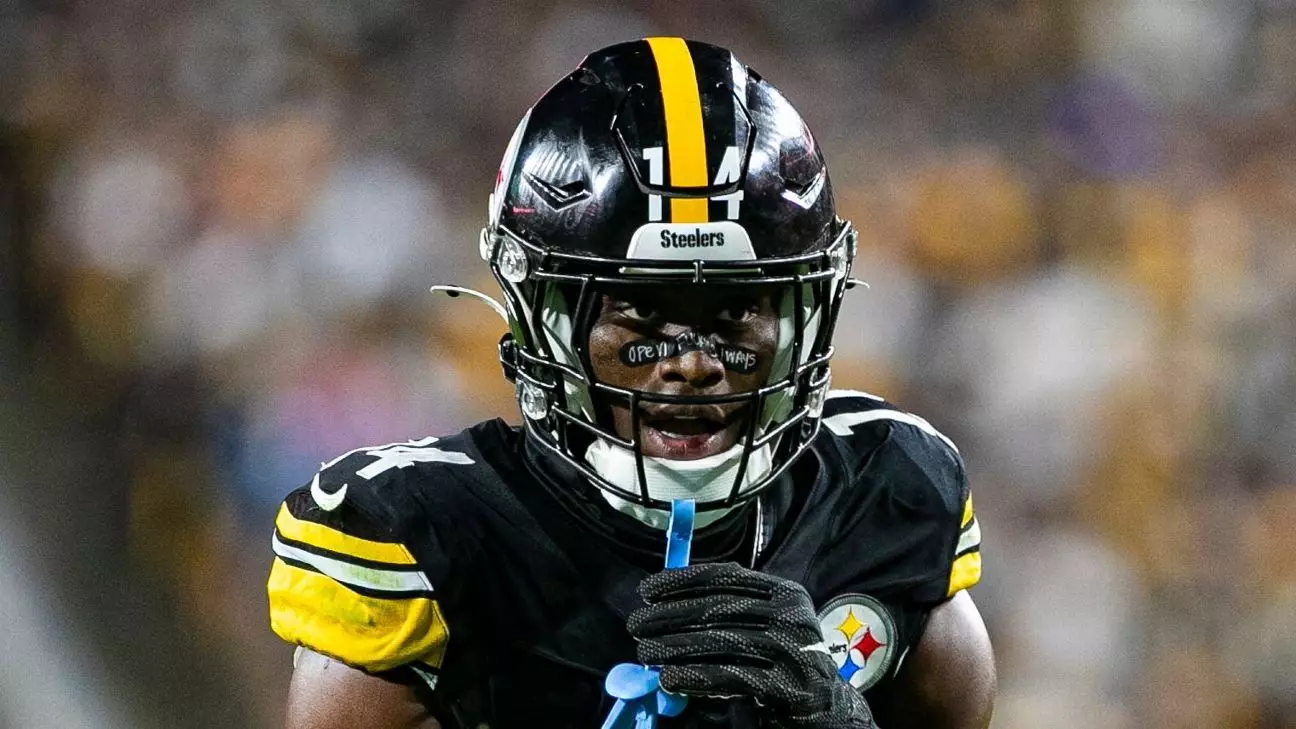The Unfiltered Realities of George Pickens: Competition, Emotions, and NFL Protocol
Have you ever found yourself caught in the whirlwind of emotions that follow a heated sports game? Well, if you’re a fan of the NFL, you know exactly what I’m talking about. The aftermath is more than just numbers on a scoreboard; it’s a drama unfolding with every player becoming a character in an intense story. This is especially true for Pittsburgh Steelers wide receiver George Pickens, whose recent actions have placed him under the spotlight. His journey through ambition, frustration, and controversy offers a fascinating glimpse into the emotional rollercoaster athletes face.
The recent game against the Dallas Cowboys was a classic example of this narrative complexity. Pickens found himself at the center of attention not just for his performance on the field but also for his bold fashion statement. His choice to wear eye black reading “Open F—ing Always” was both defiant and intriguing. Although he casually dismissed questions about its meaning, die-hard fans and analysts can’t help but wonder what prompted such a statement. Was it merely an expression of confidence, or did it reflect deeper sentiments tied to his role in the team?
Key Takeaways
- George Pickens’ expressions reflect broader themes of personal ambition versus team dynamics.
- The NFL’s strict protocols often clash with players’ desires for self-expression.
- Player-coach relationships are crucial in navigating team strategy and individual aspirations.
In the world of professional sports, athletes are no strangers to rules and regulations, and the NFL is particularly known for its stringent policies. Pickens’ choice to wear provocative eye black raised questions about possible fines from the league for breaching uniform rules. Yet, his seemingly indifferent response—claiming ignorance of these guidelines—sparked debates about whether athletes are genuinely disconnected from these protocols or simply willing to bear the consequences. This leads us to ponder: how do players balance their personal expressions against the expectations set by such a prestigious league?

This isn’t the first time we’ve seen tension between individual expression and league conformity. We’ve witnessed instances where players like Cameron Heyward faced fines for displaying personal messages on their gear. Such cases highlight ongoing debates within the league about professionalism versus individuality. Pickens’ casual attitude might be seen as a challenge to traditional norms, questioning whether these standards still hold relevance in today’s sports culture where visibility and perception are everything.
As we dive into Pickens’ role within his team’s gameplay strategy, it becomes clear that individual ambitions often collide with collective plans. During the game against the Cowboys, he had limited playing time—a deliberate decision by Head Coach Mike Tomlin and offensive coordinator Arthur Smith. While strategic in nature, this decision paints a picture of how complex team dynamics can become when personal performance desires meet prearranged game strategies. It raises important questions: How do players like Pickens adapt when their competitive spirits clash with structured roles?
In interviews following the game, Pickens showed professionalism by deferring questions about playing time to his coach. However, there was an underlying hint of frustration. It’s a relatable scenario: balancing personal goals with broader team objectives is never easy. For competitive players like Pickens, being sidelined even briefly can be emotionally taxing. His visible frustration during games highlights this internal struggle—managing one’s drive to excel while adhering to team commitments is an intricate dance that many athletes must master.
As if this wasn’t enough pressure already, consider the emotional turmoil athletes endure when facing challenges within their teams. We’ve seen Pickens express raw emotion through intense gestures like smashing his helmet—a manifestation of how deeply these experiences affect him. Though Smith later downplayed any frustration from Pickens’ side, it’s evident that emotions run high during such moments. Miscommunications between players and coaches only add fuel to this fire, complicating team morale and relationships.

The dynamics between players and quarterbacks also contribute significantly to maintaining harmony amidst internal tensions. Quarterbacks Justin Fields and Russell Wilson have been pivotal figures in supporting Pickens through these times. Their long-standing camaraderie—stemming from shared experiences since high school—underscores how personal bonds play vital roles in professional settings. These relationships serve as foundational pillars for open communication during challenging circumstances.
Navigating External Pressures and Internal Expectations
Ultimately, George Pickens exemplifies the intricate interplay between personal ambitions, team strategies, and external pressures faced by modern athletes today. His bold statements—whether through eye black or sideline outbursts—underscore how sports are inherently human experiences filled with passion and complexity beyond mere competition statistics alone.
Pickens’ journey resonates widely among contemporary athletes as they navigate similar challenges while striving towards greatness within fiercely competitive environments like NFL leagues today! With increasing scrutiny from fans/media alike alongside evolving norms surrounding player expressions/individuality amid collective goals/strategies—it remains imperative that discussions surrounding these topics continue toward shaping future paradigms defining professional sports landscapes going forward!
Final Thoughts
Navigating life as an NFL athlete isn’t just about physical prowess; it’s about understanding your role within larger contexts while staying true to yourself despite external pressures or internal conflicts posed by various stakeholders involved across different levels/areas impacting overall outcomes affecting both short-term wins/losses alongside long-term career trajectories alike! As we watch George Pickens chart his path amidst all these intricacies—we are reminded once again why sports remain captivating spectacles worthy our attention time after time!
George Pickens
NFL competition
player emotions
sports protocol


Leave a Reply